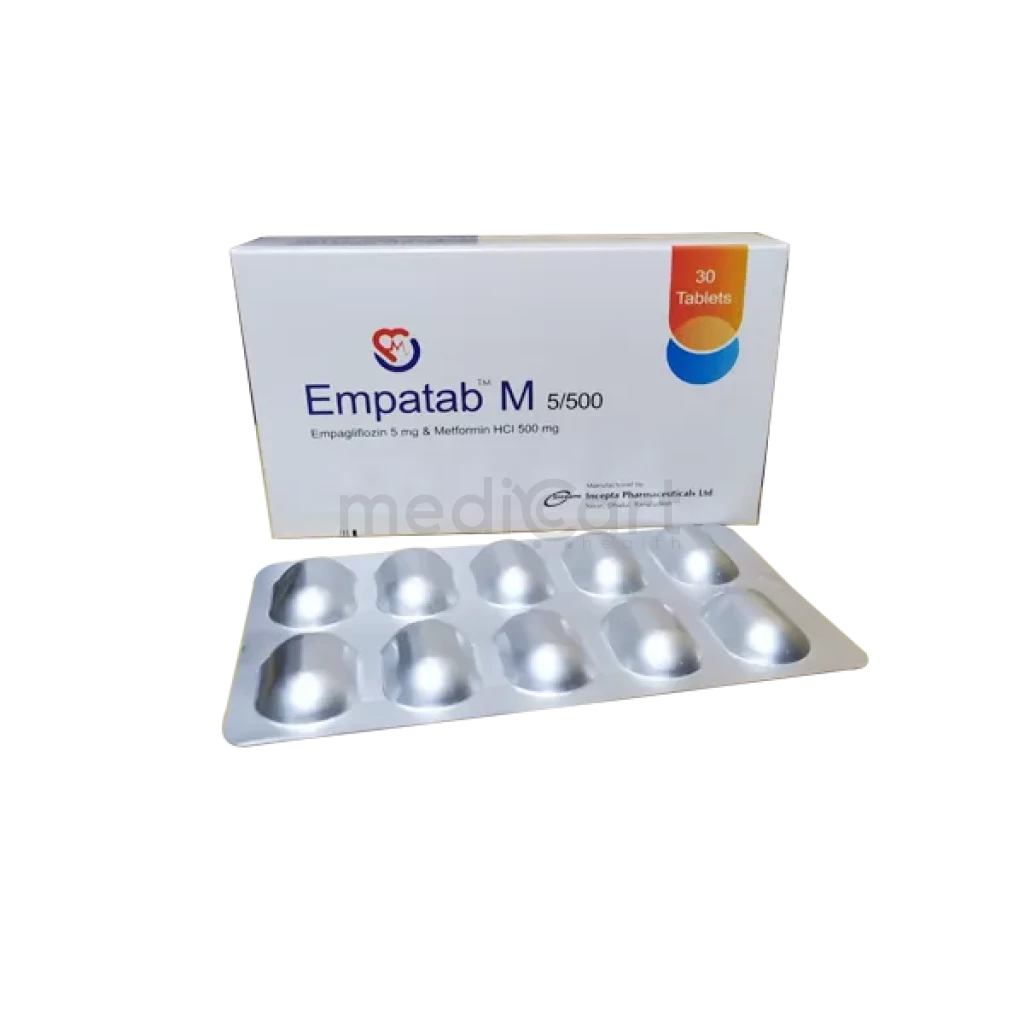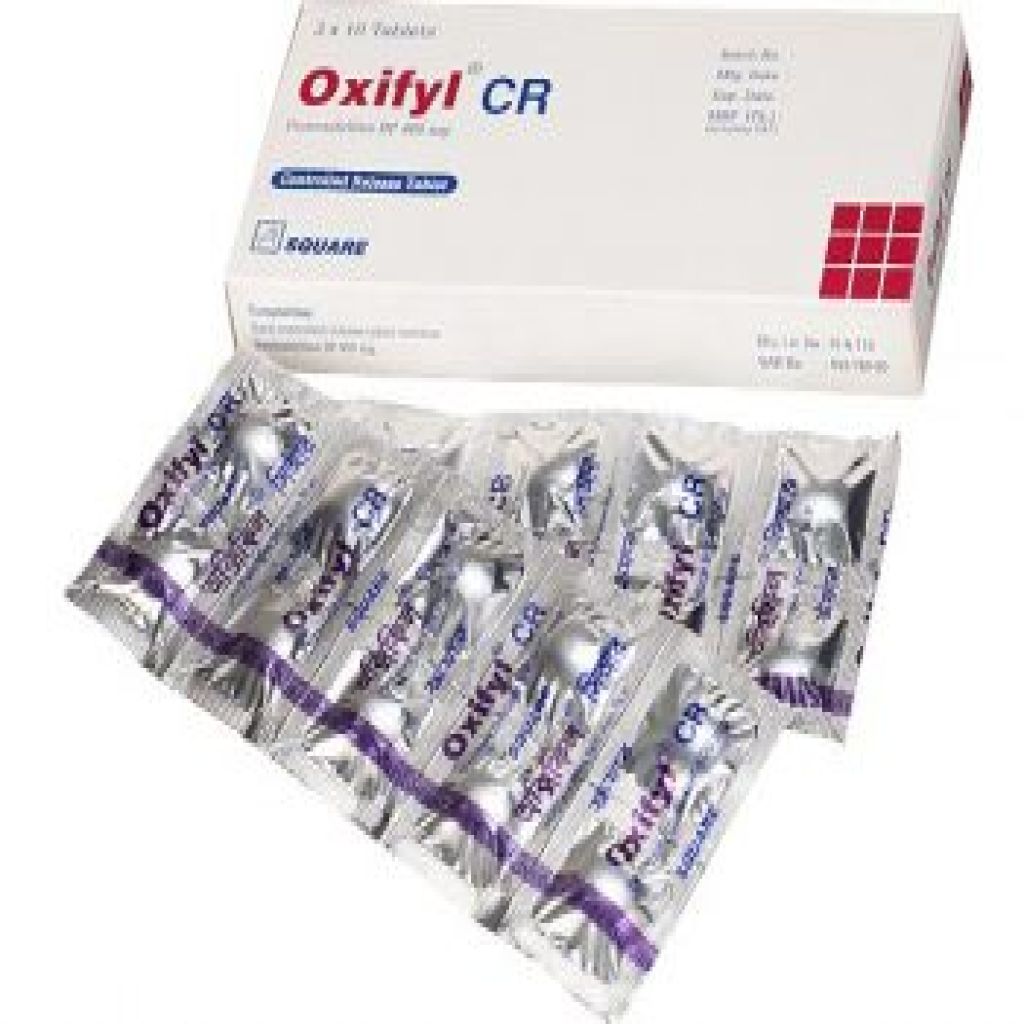

Emazid M 500 - 5 mg
Tablet
Pack Size :
10 Tablet x 1 Strip
Generics :
Empagliflozin + Metformin
Manufacturer :
Eskayef Pharmaceuticals Ltd.
Best Price *
TK
150.00
* Delivery will be done in Dhaka city only.
More Information About - Emazid M 500 - 5 mg
Description
Generic Name
Empagliflozin + MetforminPrecaution
Patient with risk factors for acute kidney injury, congestive heart failure, history of pancreatitis, and those who are exposed to stress (e.g. infection, fever, trauma, surgery). Pregnancy. Not intended for the treatment of diabetic ketoacidosis or type 1 diabetes mellitus.Indication
Type 2 Diabetes MellitusContra Indication
Diabetic pre-coma, acute or chronic metabolic acidosis (e.g. diabetic ketoacidosis, lactic acidosis), alcoholism or acute alcohol intoxication, acute or chronic disease that may cause hypoxia (e.g. cardiac or respiratory failure, recent MI, shock), conditions which may alter renal function (e.g. severe infection, dehydration). Intravascular administration of iodinated contrast agents. Hepatic and severe renal impairment (GFR <30 mL/min), ESRD, patient on dialysis. Lactation.Dose
N/ASide Effect
1-10% Urinary tract infection (7.6-9.3%) Decreased vitamin B12 levels (7%) Increased LDL-C (4.6-6.5%) Female genital mycotic infections (5.4-6.4%) Dyslipidemia (2.9-3.9%) Increased urination (3.2-3.4%) Male genital mycotic infections (1.6-3.1%) Nausea (1.1-2.3%) Hypoglycemia, with monotherapy (1.4-1.8%) <1% Volume depletion Impaired renal functionPregnancy Category
Name : Not Classified
Description
FDA has not yet classified the drug into a specified pregnancy category.Mode of Action
Empagliflozin: Selective sodium-glucose transporter-2 (SGLT2) inhibitor; SGLT2 is expressed in the proximal renal tubules and is responsible for the majority of the reabsorption of filtered glucose from the tubular lumen; SGLT2 inhibitors reduce glucose reabsorption and lower the renal threshold for glucose, thereby increasing urinary glucose excretion Metformin: Decreases hepatic glucose production; decreases GI glucose absorption; increases target cell insulin sensitivityInteraction
Empagliflozin: May potentiate diuretic effect and increased risk of hypotension with thiazides and loop diuretics. Increased plasma concentration with UGT enzyme inhibitor (e.g. probenecid). Increased risk of hypoglycaemia with insulin and sulfonylureas. Metformin: Reduced efficacy with verapamil. Increased gastrointestinal absorption and efficacy with rifampicin. Increased plasma concentration with organic cation transporters (OCT) inhibitors (e.g. ranolazine, vandetanib, dolutegravir, cimetidine). Altered renal elimination with olaparib. Increased risk of lactic acidosis with topiramate or other carbonic anhydrase inhibitors (e.g. zonisamide, acetazolamide, dichlorphenamide), NSAIDs, ACE inhibitors, angiotensin II receptor antagonists, diuretics. May impair vitamin B12 absorption. Potentially Fatal: Intravascular administration of iodinated contrast may cause nephropathy and increased risk of metformin-induced lactic acidosis.Pregnancy Category Note
Pregnancy Not recommended during second and third trimester of pregnancy based on animal data Limited available data with use in pregnant women is not sufficient to determine a drug-associated risk for major birth defects and miscarriages Metformin may result in ovulation in some anovulatory women; discuss the potential for unintended pregnancy with premenopausal women Animal data In animal studies, adverse renal changes were observed in rats when empagliflozin was administered during period of renal development corresponding to the late second and third trimesters of human pregnancy Doses ~13-times the maximum clinical dose caused renal pelvic and tubule dilatations were reversible Not teratogenic in rats and rabbits up to 300 mg/kg/day, which approximates 48-times and 128-times, respectively, the maximum clinical dose of 25 mg when administered during organogenesis Clinical considerations Poorly controlled diabetes in pregnancy increases maternal risk for diabetic ketoacidosis, pre-eclampsia, spontaneous abortions, preterm delivery, stillbirth, and delivery complications; poorly controlled diabetes increases fetal risk for major birth defects, still birth, and macrosomia related morbidity Lactation There is no information regarding presence in human milk, the effects on breastfed infant or on milk production Empagliflozin is present in the milk of lactating rats Owing to the potential for serious adverse reactions in a breastfed infant, advise women that it is not recommended while breastfeedingAdult Dose
Oral Type 2 diabetes mellitus Adult: Immediate-release tablet Take 1 tab twice daily with meals, with gradual dose escalation to reduce the GI adverse effects due to metformin Extended-release tablet Take 1 tab once daily with a meal in the morning, with gradual dose escalation to reduce the GI adverse effects due to metformin Max: Empagliflozin 25 mg and metformin 2,000 mg daily. Hepatic impairment Avoid use in patients with clinical or laboratory evidence of hepatic disease Use of metformin in patients with hepatic impairment has been associated with lactic acidosisChild Dose
N/ARenal Dose
Renal impairment eGFR <45 mL/min/1.73 m2: ContraindicatedAdministration
Should be taken with food. Take w/ meals to reduce GI discomfort.Disclaimer
The information provided herein are for informational purposes only and not intended to be a substitute for professional medical advice, diagnosis, or treatment. Please note that this information should not be treated as a replacement for physical medical consultation or advice. Great effort has been placed to provide accurate and comprehensive data. However, Medicart along with its authors and editors make no representations or warranties and specifically disclaim all liability for any medical information provided on the site. The absence of any information and/or warning to any drug shall not be considered and assumed as an implied assurance of the Company.






